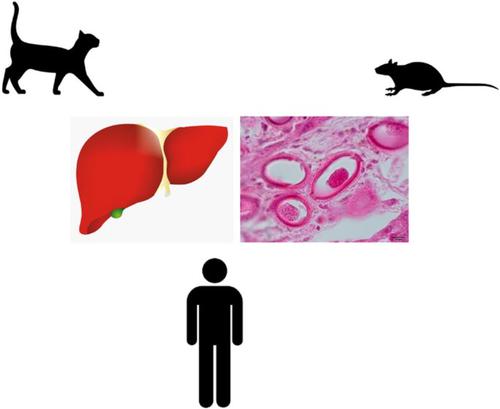Parasitology Research ( IF 1.8 ) Pub Date : 2021-01-22 , DOI: 10.1007/s00436-021-07056-4 Alireza Sazmand 1, 2 , Monireh Khordadmehr 3 , Alireza Nourian 1 , Domenico Otranto 1, 4

|
Capillaria hepatica (syn. Calodium hepaticum) is a globally distributed nematode with a high affinity to the liver of a wide range of mammalian hosts, including humans. Documented reports of the nematode in cats and associated histopathology are rare. Here, we describe a case of C. hepatica infection in a 5-year-old male stray cat from Iran. At post-car accident necropsy, all body parts appeared normal except for the liver, in which a few yellowish-white granulomatous nodules were observed through the capsule and in the organ. Histopathological examination of the tissue revealed a large number of clustered parasite eggs in the parenchyma. The barrel-shaped, un-embryonated eggs (55.19 × 28.37 μm), with inconspicuous caps at both ends, were covered with striated shells. The presence of ova in the liver tissue had resulted in the development of hepatic inflammation with hepatocellular necrosis associated with the development of multifocal granulomas. As predators of small rodents, the cats might have a significant role in the epidemiology of C. hepatica. Infection of hosts through ingestion of embryonated eggs in contaminated water, food, or soil is of major importance in the epidemiology of C. hepatica. Since the rare reports of feline infection have come mainly from accidental detection of the parasite, any hepatic disease presenting difficulties to find an etiological agent may virtually be associated with the infection with this little-known nematode.
Graphical abstract
中文翻译:

猫(Felis catus)感染肝毛细血管肝(Bancroft,1893)-组织病理学发现和伊朗的首次报道
肝毛细血管虫(肝毛化钙)是一种全球分布的线虫,对包括人类在内的多种哺乳动物宿主的肝脏都具有很高的亲和力。关于猫线虫和相关组织病理学的文献报道很少。在这里,我们描述了一例肝衣原体感染来自伊朗的5岁雄性流浪猫。车祸后尸检时,除肝脏外,其他所有部位均正常,其中通过胶囊和器官观察到一些黄白色肉芽肿结节。组织的组织病理学检查显示薄壁组织中有大量聚集的寄生虫卵。桶形,未育卵(55.19×28.37μm),两端均不明显,盖有条纹壳。肝组织中卵子的存在导致了肝炎的发展,伴有多灶性肉芽肿的发展的肝细胞坏死。作为小型啮齿动物的捕食者,这些猫可能在肝衣原虫的流行病学中起重要作用。通过摄入受污染的水,食物或土壤中的胚卵对宿主进行感染在肝炎衣原体的流行病学中至关重要。由于罕见的猫感染报告主要来自偶然发现的寄生虫,因此任何难以找到病原体的肝病实际上都可能与这种鲜为人知的线虫感染有关。











































 京公网安备 11010802027423号
京公网安备 11010802027423号